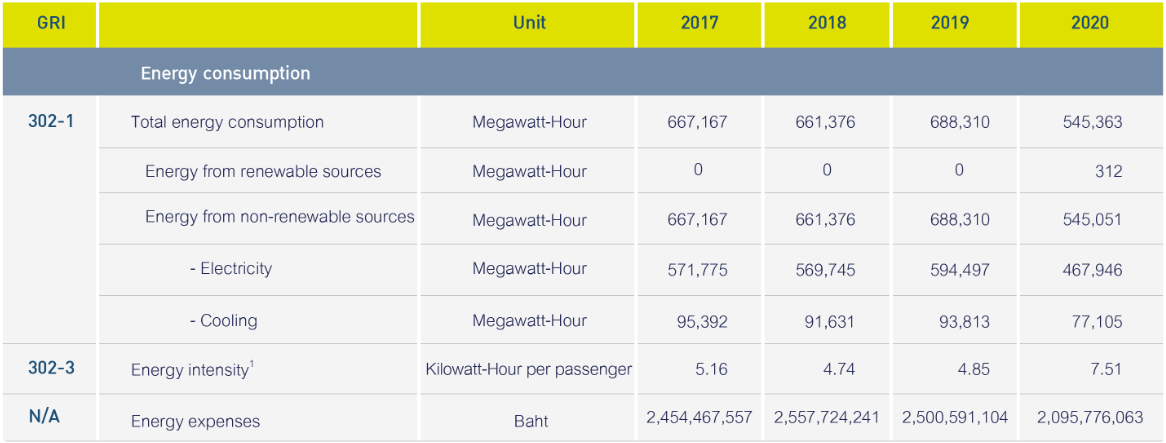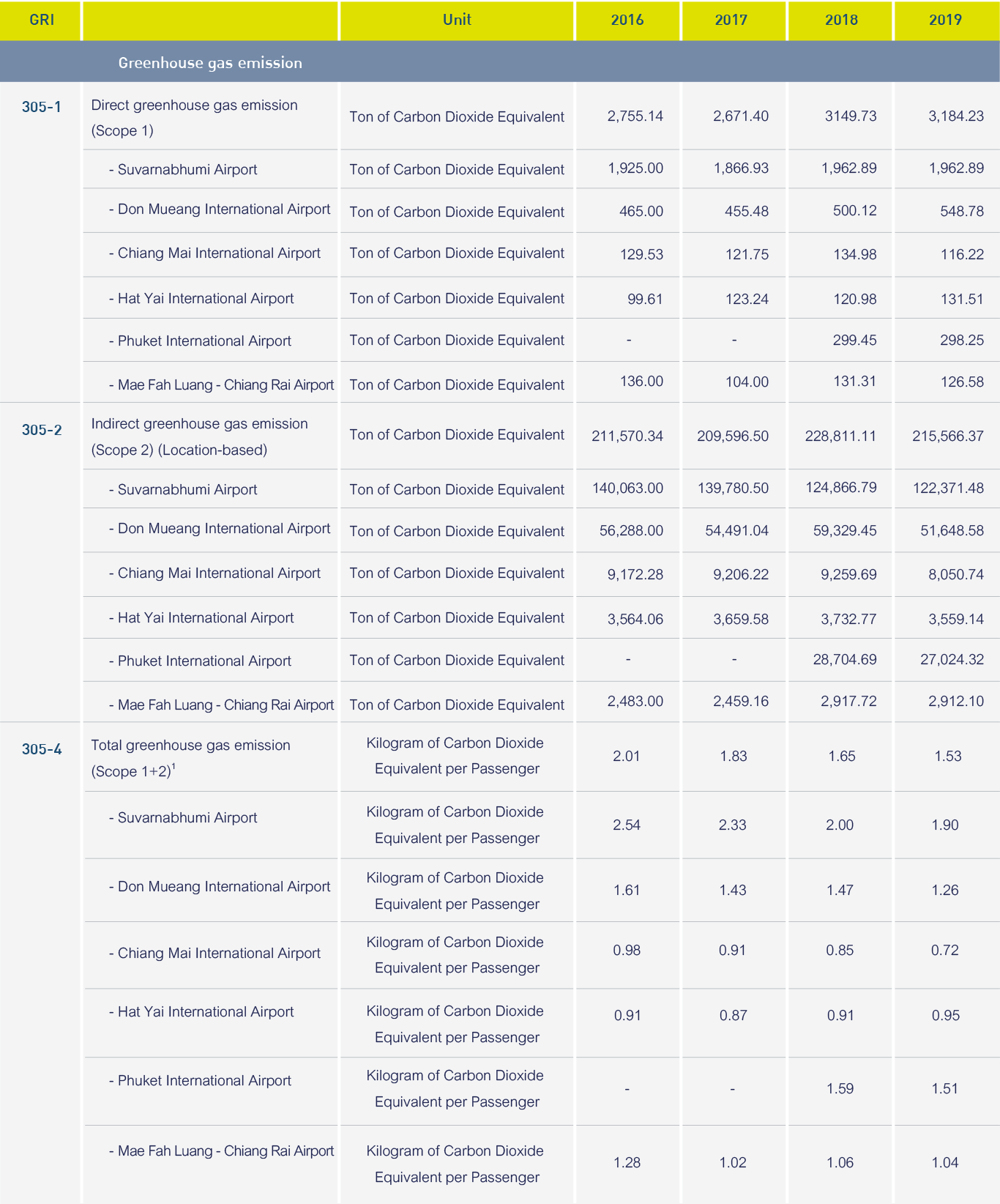Economic
Environment
Society
Environment
Utilization of Environmental Resource

Remark
Information compiled from electricity invoices of all six AOT airports, inclusive of third-party vendors but exclusive of AOT Headquarter.
Information collection, computation, and unit conversation is in accordance with GHG Protocol on Corporate Accounting and Reporting Standard
1 Include both electricity and cooling, calculated per one passenger

Remark
Information presented above is based on a calendar year basis. Collection, computation, and unit conversation is in accordance with GHG Protocol on Corporate Accounting and Reporting Standard by considering greenhouse gas that is carbon dioxide and is without Biogenic CO2 emission only. AOT applies Emission Factor from Thailand Greenhouse Gas Management Organization (Public Organization) (January 2017), U.S. Environmental Protection Agency (EPA) and Intergovernmental Panel on Climate Change (IPCC). The Global Warming Potential (GWP) period is 100 years, referenced from IPCC Fourth Assessment Report (AR4 - 100 year)
1 Information during 2016-2017 is compiled from five airports, exclusive of Phuket Airport
Water Utilization and Wastewater Treatment

Remark
Water consumption information is compiled from all six AOT airports, exclusive of AOT Headquarter. Information is compiled from water consumption invoices and internal water circulation gauges.
1 All water consumed from external water source are freshwater (≤1,000 mg/L Total Dissolved Solids)
2 From the analysis using Aqueduct Water Risk Atlas suggested by World Resources Institute (WRI), AOT operates two airports in the extremely high water stress areas which are Suvarnabhumi Airport and Chiang Mai International Airport
3 AOT considers that water discharge volume is equivalent to the volume of water entering the treatment system. Water from the treatment system possess similar or higher quality than water obtained from natural resources. This is in compliance with environmental regulations and requirements in the Environmental Impact Assessment (EIA). Several parameters are measured according to EIA requirements such as acidity (pH), TKNBOD, TDS, subsided sediments, suspended sediments, and sulfide for example. AOT found no violation of water quality requirements in Fiscal Year 2020.
4 Water consumption is the difference between water withdrawal volume and water discharge volume. AOT owns no significant reservoir that could impact water supply in surrounding vicinities.
5 Volume of recycled water consumption is compiled from Suvarnabhumi Airport and Hat Yai International Airport. System installation and information collection are being prepared in other airports.
Resource and wastewater management

Remark
1 AOT has changed the reporting standard from GRI 306 (2016): Effluents and Waste to GRI 306 (2020): Waste starting in Fiscal Year 2020. Waste volume that has not been categorized during 2017-2019 is presented as 0.
2 Information on recycled waste is compiled from Suvarnabhumi Airport and Chiang Mai International Airport. AOT is in the process of collecting information on waste utilization such as recycling or producing fertilizer. Future report shall be compiled from all airports. All waste utilization has been done outside AOT premises.
3 Disposal of hazardous waste is aligned with environmental regulations and the Environmental Impact Assessment (EIA). Disposal of general waste is in accordance with local requirements and managed by municipalities or certified private enterprises. All waste disposal has been made outside AOT premises.
